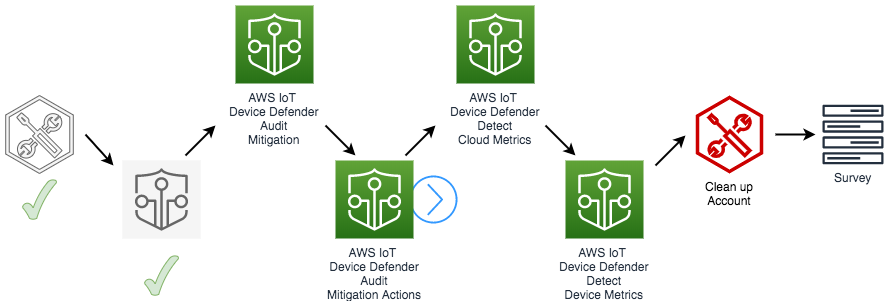Audit: Setup
Your company developed a new product and delivered thousands of devices to the market. Seeing the growing security issues on other IoT solutions, the CIO requested that you put in place a few compliance checks in a short amount of time. You thought on developing a robust monitoring mechanism, but the estimated effort and time would not meet the company needs. During this investigation, you read about AWS IoT Device Defender and how it can help you.
In this workshop, you will learn how to use AWS IoT Device Defender to simplify this task. The sample architecture shows an example of how to inspect and update AWS IoT policies that are too permissive and don’t follow AWS IoT best practices.
You will walk through a solution which has the following tasks:
- Configure AWS IoT Device Defender Audit
- Setup an SNS Topic to send Findings to an AWS Lambda Function
- Understand and update the AWS Lambda function to process the audit results and fix detected issues
- Run an on-demand audit
- Monitor the progress of the audit
- Validate the mitigation action
The diagram below depicts the AWS services used in this solution and the main steps executed after completing the setup.
You should only use the architecture and sample code displayed below as a guideline.

Setting up AWS IoT Device Defender Audit
AWS IoT Device Defender Audit requires a Role with specific Permissions to act on your account. The audit wizard helps you to setup this Role and create an initial Audit configuration.
If you have run the audit wizard before, you may skip this session. Otherwise, you should follow the steps below to finish this setup.
- Open the AWS IoT console
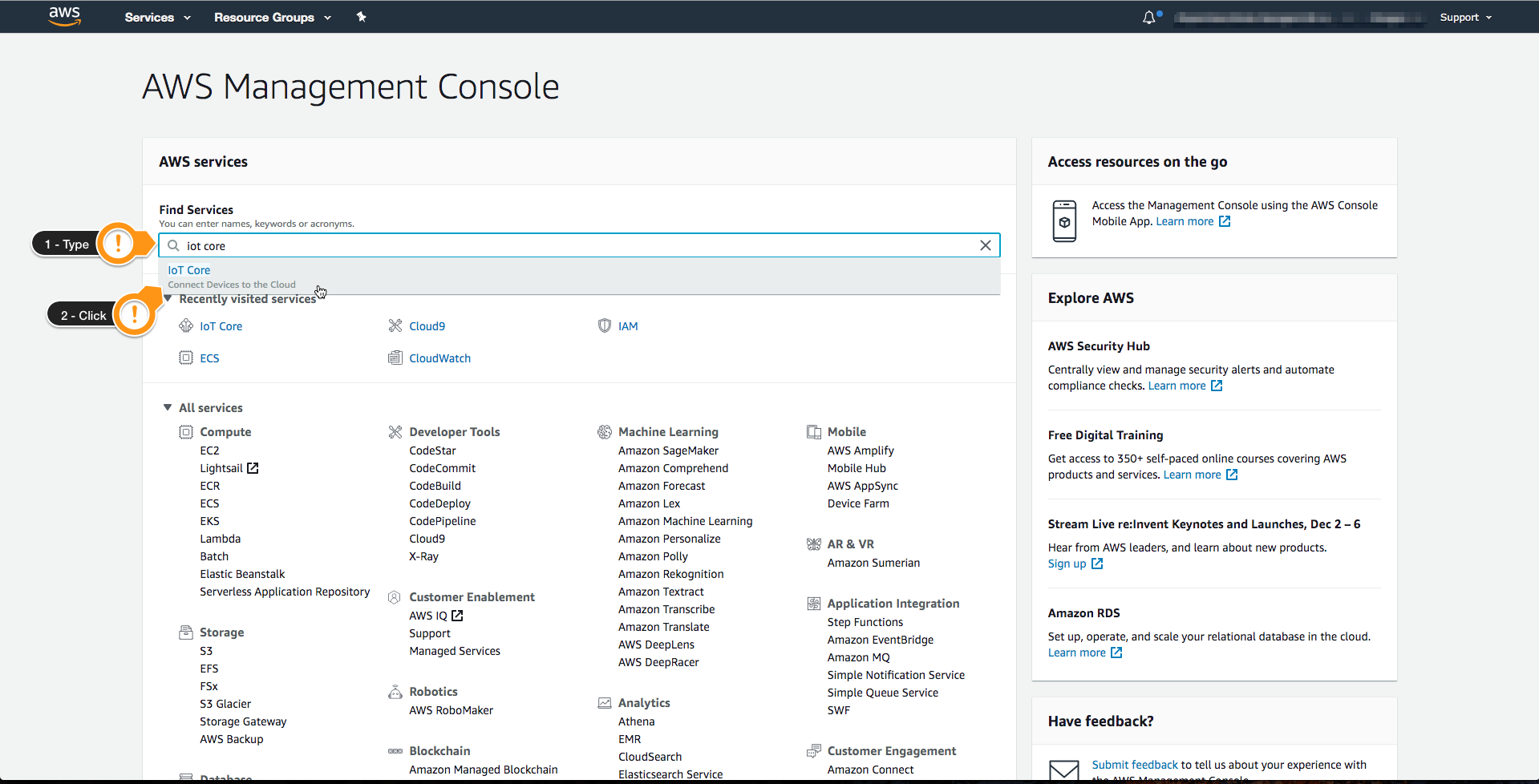
- Choose Defend
- If you see the screen below, it means you haven’t setup the account yet
- Choose Get started with an audit

- Choose Next
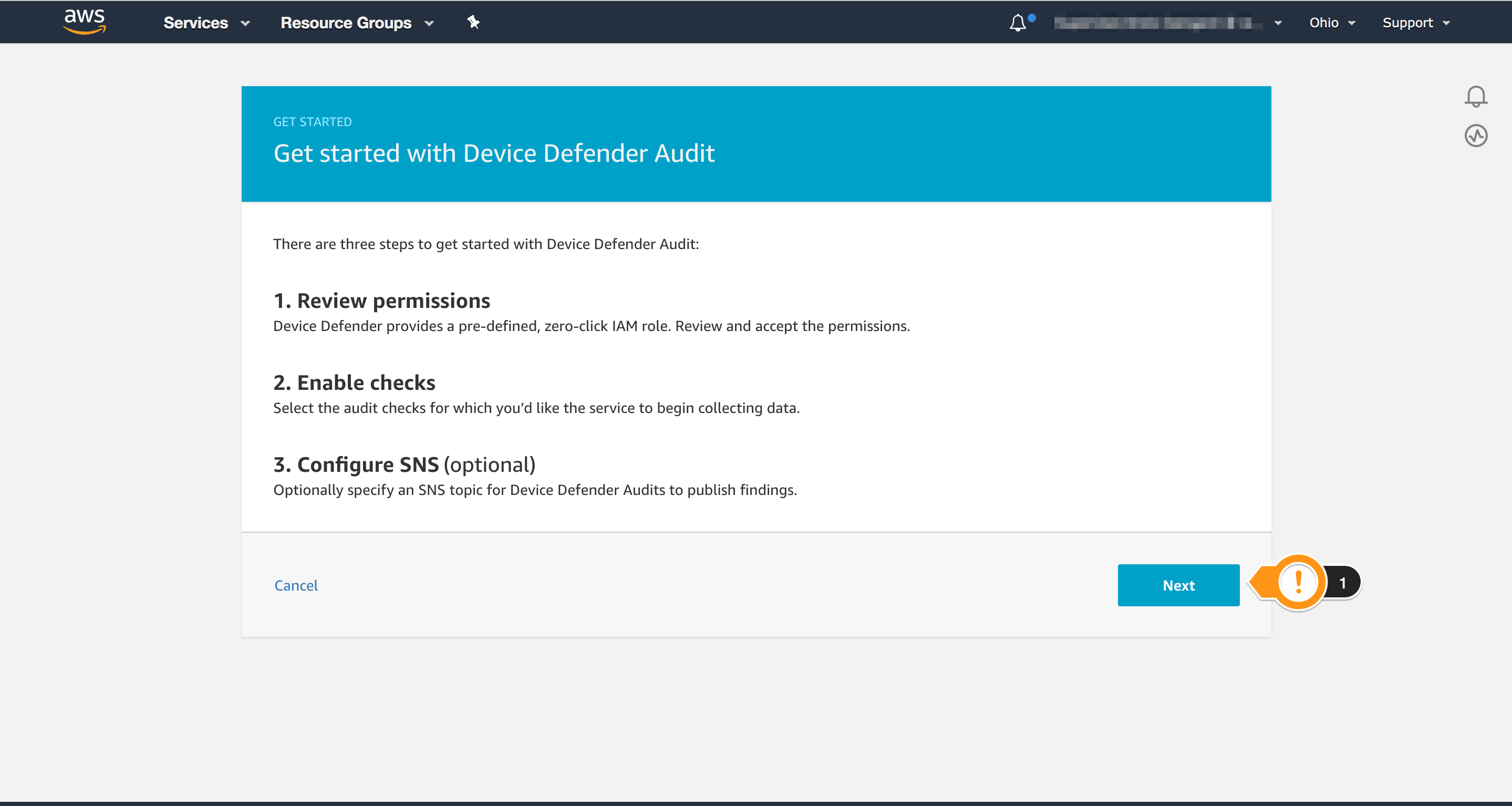
- Choose Create Role
You may want to check the Permissions required by AWS IoT Device Defender Audit, clicking on Permissions

- For Name type
AWSIoTDeviceDefenderAudit_Role - Choose Create Role
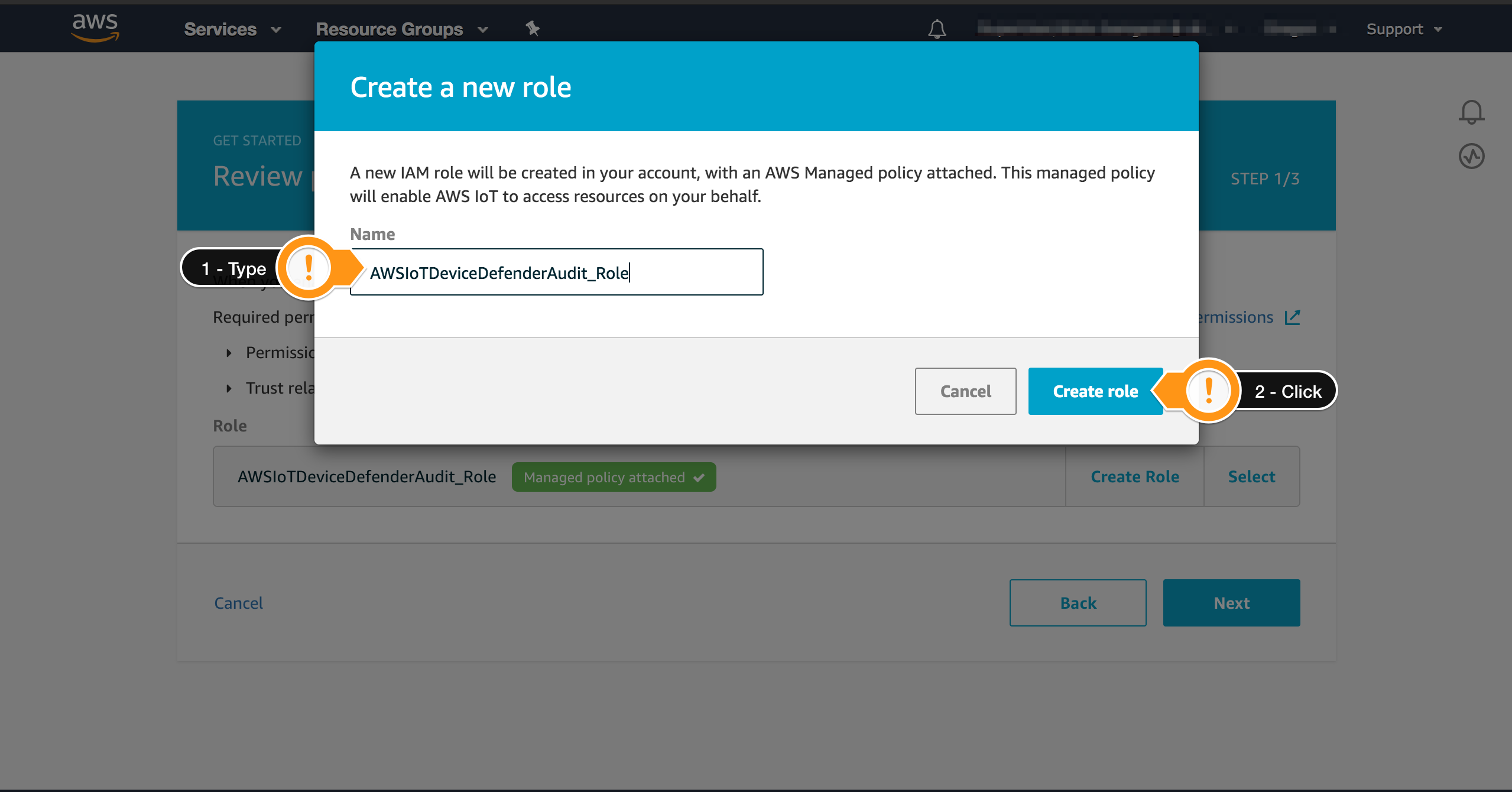
- Choose Next
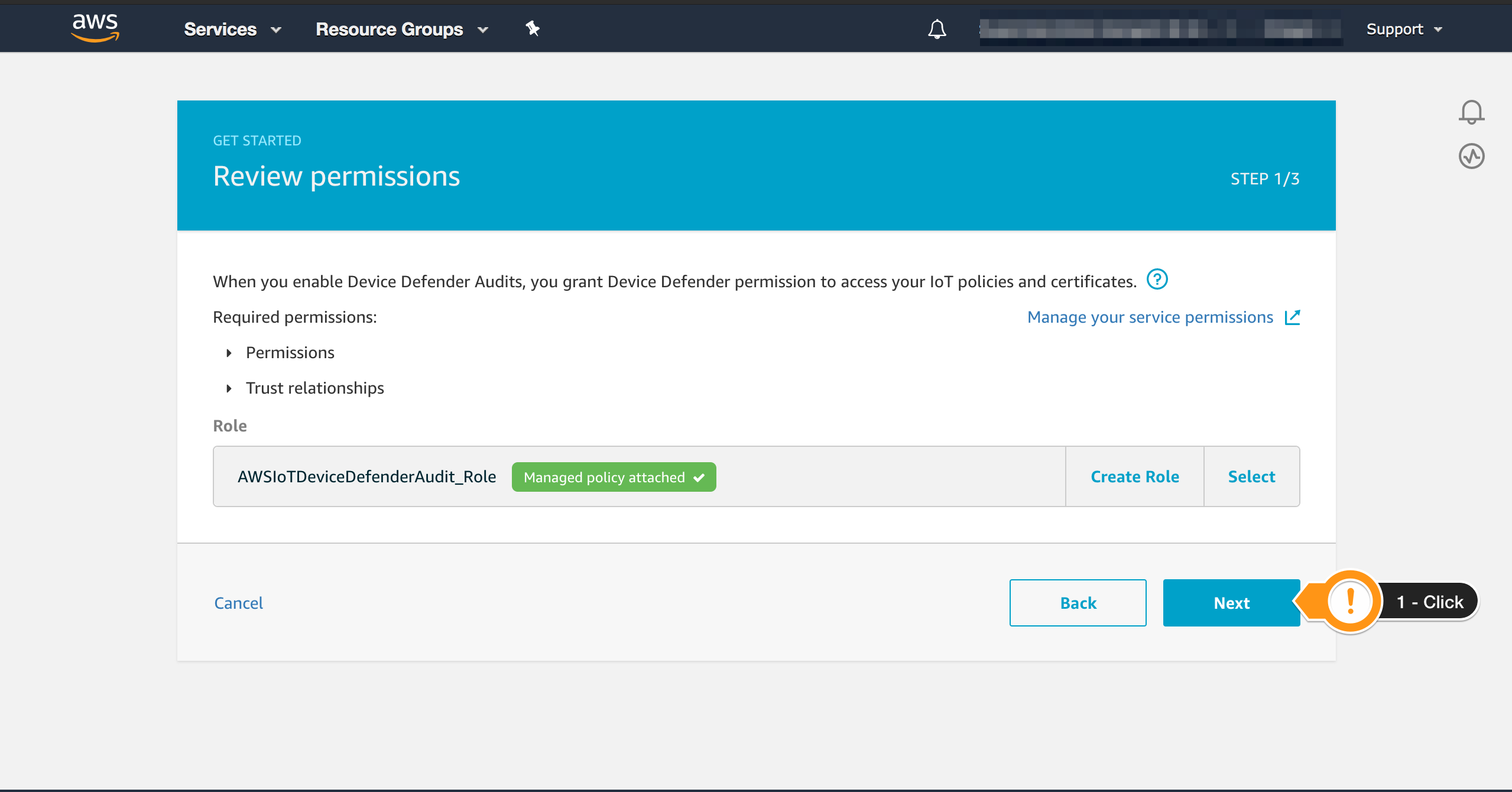
- Scroll down and choose Next
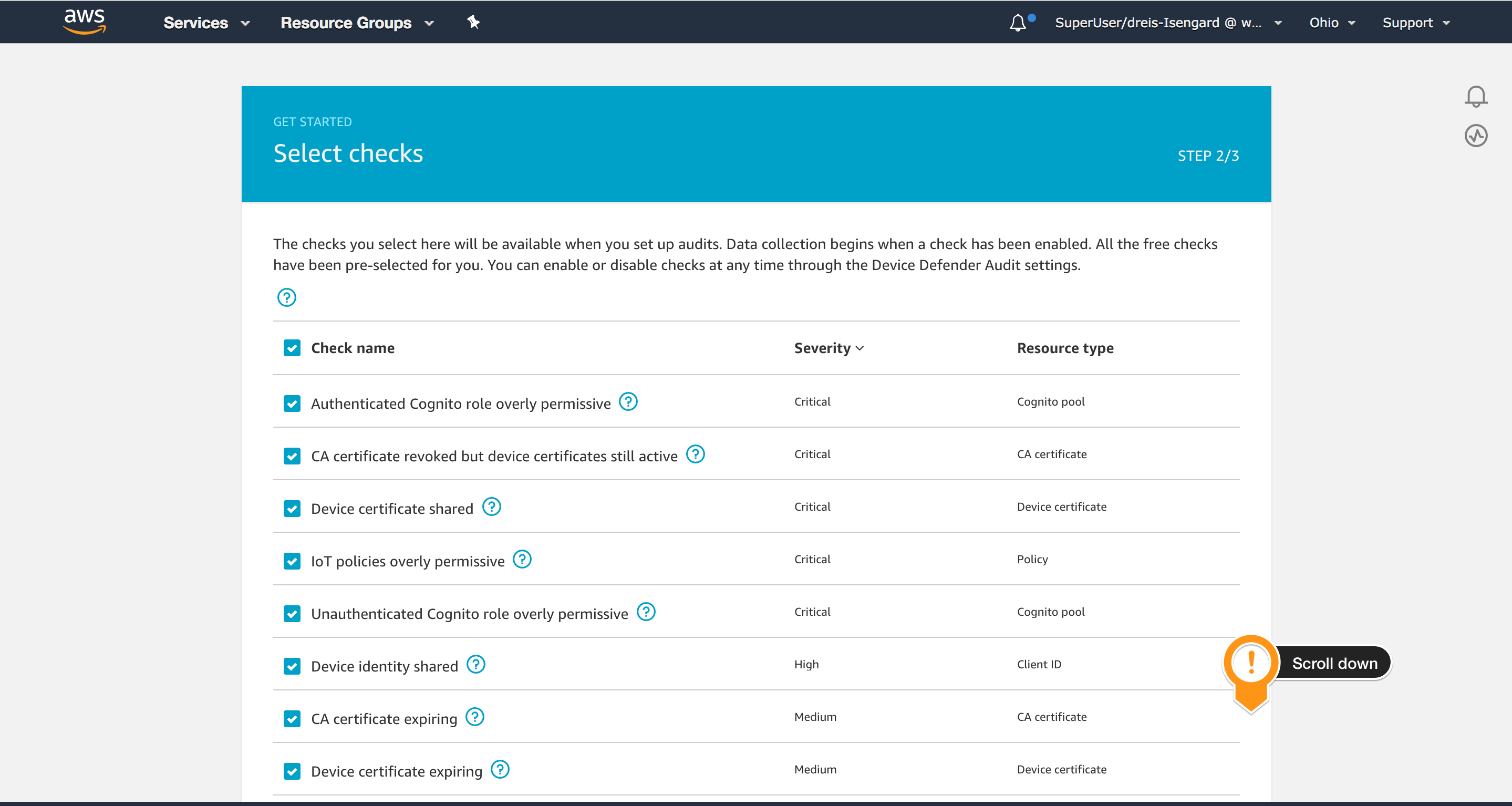
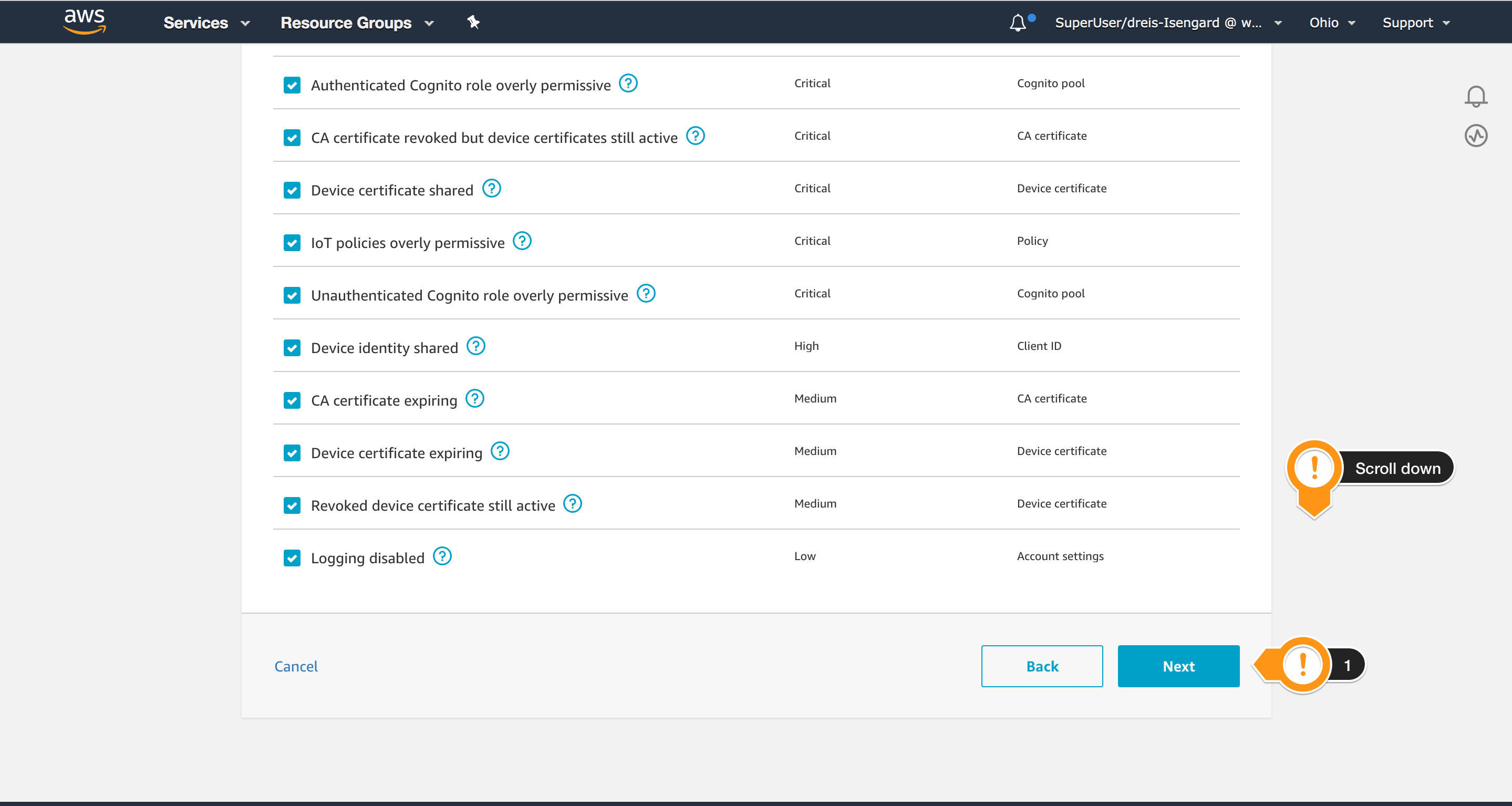
- Choose Disabled, because you will setup this later
- Choose Enable audit to finish
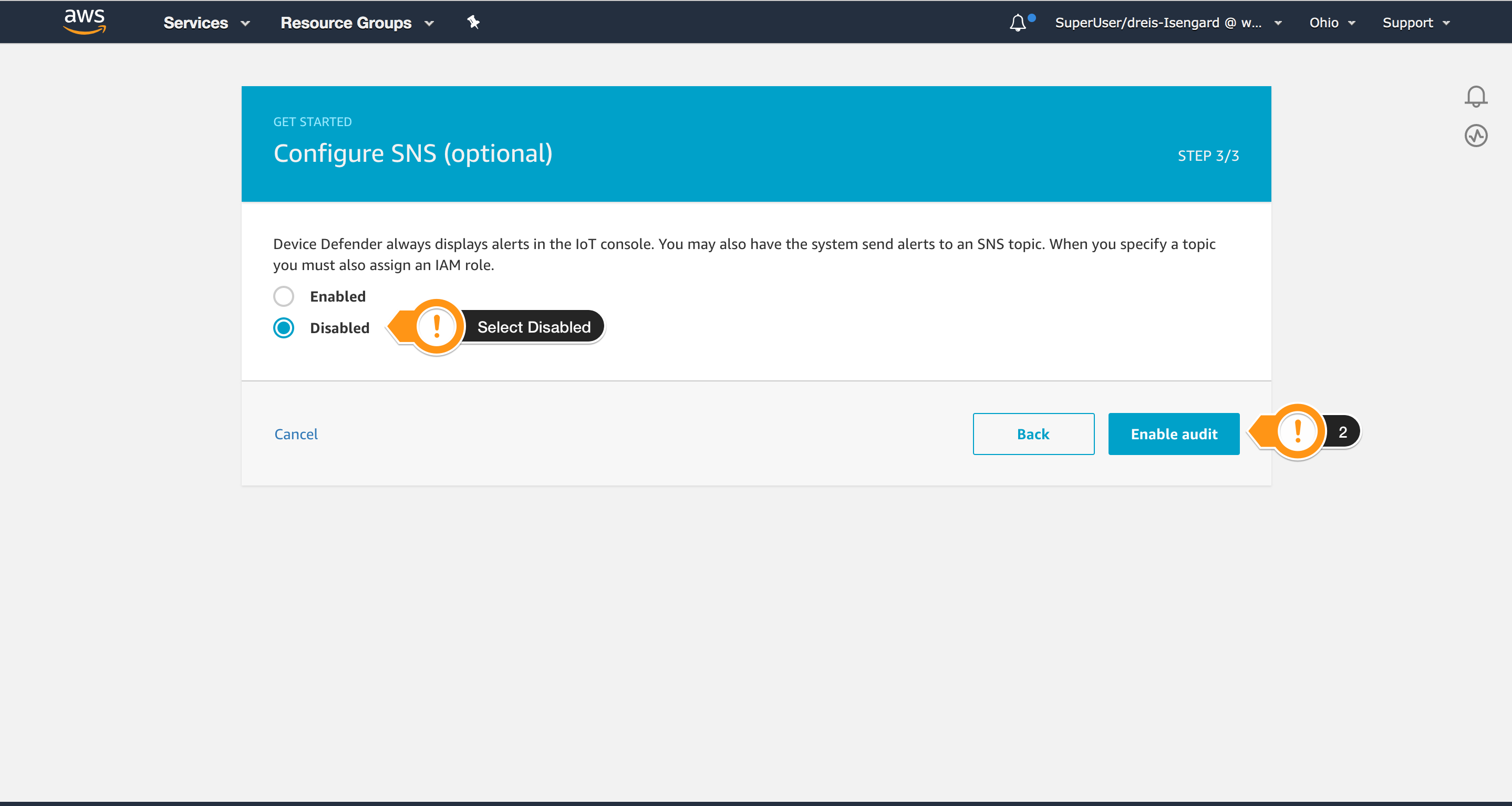
- You will see that AWS IoT Device Defender created a sample Daily Audit (
AWSIoTDeviceDefenderDailyAudit)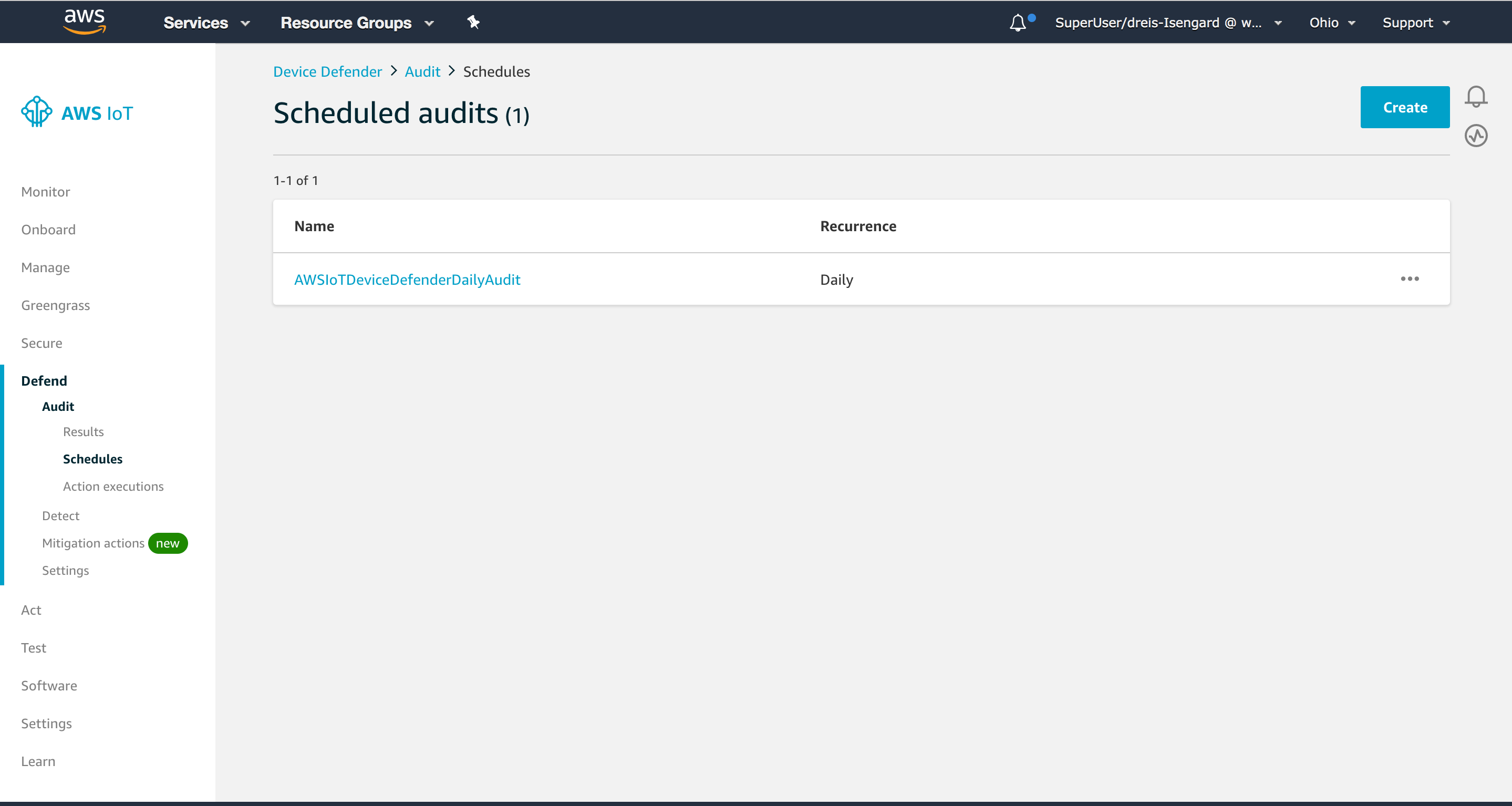
Conclusion
Well done! You set up AWS IoT Device Defender Audit and created your first audit task. Now, let’s work on the mitigation strategy.
